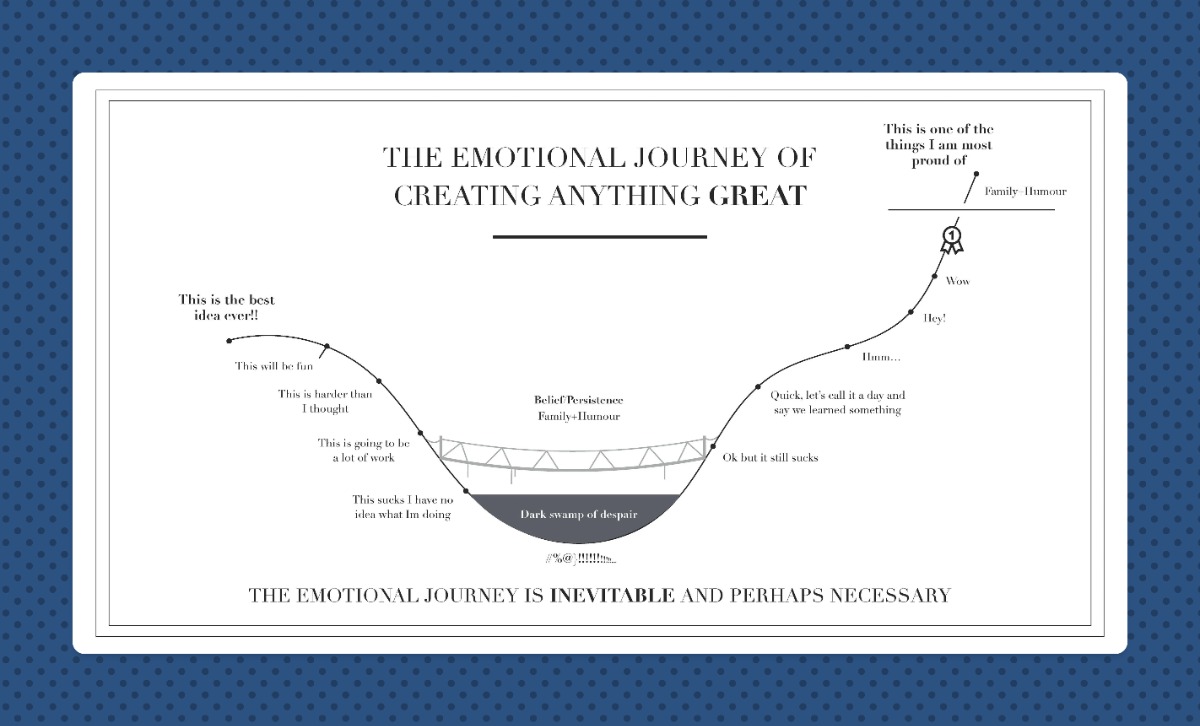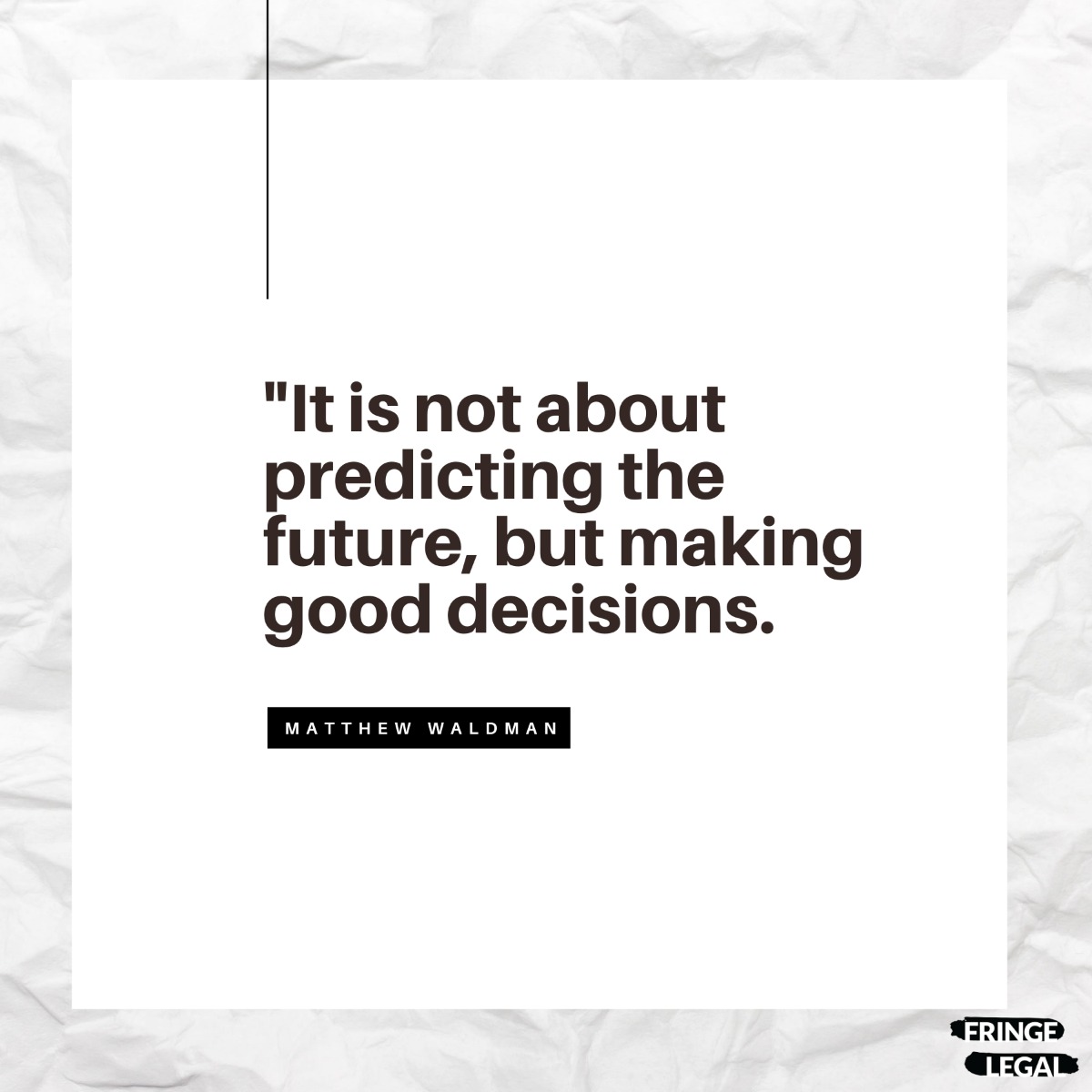Fringe Legal #0051: Innovation through serendipity 💪
Jul 02, 2021 9:52 am
👋 Hi
If this is your first time getting the newsletter - welcome! You can expect to find snackable information on innovation, transformation, and knowledge management each week.
If you have any feedback, topic suggestions, or want to say 'hello' - you can find me on LinkedIn.
Congrats to the winner of the giveaway - be on the lookout for an email with instructions. Thank you to all that entered.
Snacks 🌮😋
2021 report on the state of the legal market (PDF)
The Center on Ethics and the Legal Profession at the Georgetown University Law Center and Thomson Reuters Institute released their 2021 report setting out views on the dominant trends that impacted the legal market in 2020 and key issues likely to influence the market in 2021 and beyond. Broadly, the report asks if the legal market reached a tipping point?
I found the commentary by Legal Mosaic to be good, and it's worth a read. Here is my one-sentence takeaway from the report:
Law's tipping point is its transition from lawyer-centricity to customer-focus
The emotional journey of creating anything great
This graphic resonated with me, and as many of those reading this are innovators, change agents, and those focused on transformation, perhaps it will resonate with you too.
Knowing what lies ahead is helpful, but it doesn't necessarily make it easier. Persevere on.
🎧 Transformation and innovation lessons from designing next-gen cities
On the podcast this week, I spoke with Matthew Waldman (Founder, San-Q, and Professor, Keio Graduate School of Design) and Ruben Fernandez Vela (Senior Researcher, Samcara research lab).
This was a fascinating chat, and many of the ideas we discussed could very easily be extrapolated for firms, in-house teams, indeed any business.
Here are three things I took away:
Planning for obsolescence and avoiding inaction: with technology increasingly become a necessary part of workflows, and the pace of change increasing, often deciding what to do becomes a balancing act. Do you decide on a specific tech or wait for an update or the next big thing? This can also lead to inaction, which is sometimes more costly.
Takeaway: instead of predicting the future, the skill is in making good decisions now based on the information you have. The goal is to 'create efficiencies and create systems that allow people to thrive. If that requires new technology, then you shouldn't worry about when it's going to be obsolete'.
Balancing decision making and privacy: one of the criticisms of smart cities is the privacy argument. This applies also to systems, internal processes, and innovation initiatives. How does one go about designing systems, getting feedback without being overbearing, and seeming like a big brother?
Takeaway: As Ruben eloquently suggested, create a flow of communication between the designers and users; be open and transparent with your objectives.
Fostering innovation is simple: One of the topics explored by Samcara, the circular design lab, is how does one foster innovation? As Matt shared, the solution is simple:
"if you want to foster innovation, you have to have diversity. You have to have diversity of thought. You have to have diversity of experience. You have to have diversity of people."
Takeaway: The principle seems straightforward; it's all in the execution—another ingredient required to foster innovation: collaboration.
Other resources mentioned during the episode
- Samcara circular design lab
- San-Q consultancy
- Professor Matthew Waldman on LinkedIn
- Ruben Vela on LinkedIn
- Laying the foundation for Smart Cities
- What's fueling the smart city backlash?
- Carlos Moreno talks about the 15-minute city
- Beyond Tech - The True Meaning of a Smart City
Key takeaway: As Saskia Sassen put it:
"the city is a system of systems, but an incomplete one. its alive, always changing."
Replace city with legal practice, and the sentiment still rings true. Smart cities are beyond technology; they are about designing advancements in the human experience.
You can make a huge impact by sharing the episode on LinkedIn and to your network. Next-gen cities are about sustainability and responsible governance. We will all benefit from these discussions, and it's a tick from a CSR perspective.
Innovation through serendipity
One of the stories that stuck with me from the episode was learning about "people curators."
Research supports that opportunities are often born out of happenstance moments; those serendipitous moments when you run into someone while making tea in the office kitchen are priceless. Is there to get driven the same results by design? Here's how it works:
I'm part of the community [a co-working space] here in Tokyo... and what's very different about what they do is that they curate the people actively.
There's an actual people curator there every day. You check in with facial recognition technology... the technology is great because the curator gets a list of everyone who's in the space in real-time, and they are trained to think, Mr. Waldman would benefit from meeting this person. They're working on similar projects.
And the curators go around every day and ask, what are you working on? They take notes, and then they curate the people. They would say, you're here today, if you have time later, I'd like you to meet this person.
If you don't have the diversity of the people, you can't make that work, but you also have to create these spaces where people can interact.
Wouldn't every organization benefit from having this role?
Until next time. Stay well.
Ab
P.S. want to share feedback or suggestions? Answer this two-question survey; you can speak or type your answers.


